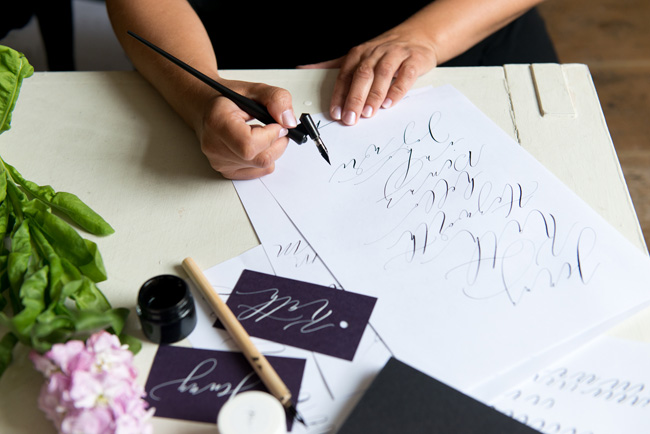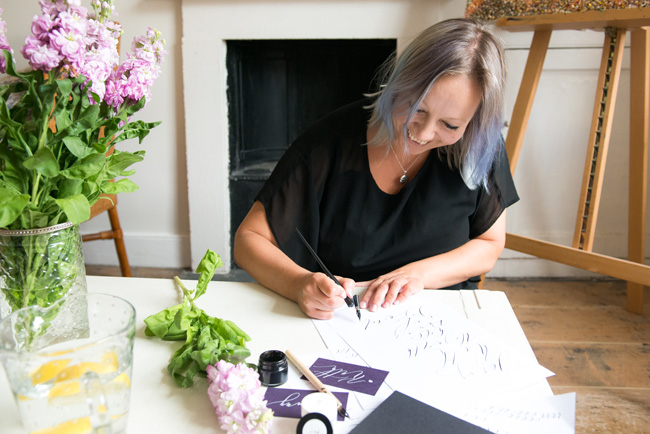1. What should I practice on?
I’m kind of proud to inspire all my students to go home and practice straight away – always the first question in a calligraphy class is what kind of paper to buy.

I use a premium printer paper – it has to be 100gsm or more, and if you can get it, find laser printer paper – it’s smooth as silk.
The paper I use in my workshops is from Rymans, but I’ve had great results with HP papers and supermarket ‘premium’ papers too.
But don’t confine your practice to plain white papers. These are perfect for alphabet drills, but it’s important to practice creatively too – try coloured inks on coloured cards for little quotes every now and then as well!

2. Why are my lines jagged (on one side)?
A jaggedy line on your downwards strokes almost always comes from holding your pen slightly leaning to one side.
It’s a really common tendency to roll the nib ever so slightly so you’re pressing a tiny bit harder on one side of it (usually the left).
Correct it by rolling your nib ever so slightly to the right – even try twisting it in the nib holder with your fingers to see if that help you get a smoother line.
The reasoning behind this is that your pen is designed to have equal pressure on each side of the nib. It will write smoothly when the nib is allowed to part in the centre without increased pressure on one side.
Remember practice makes perfect. As you gain confidence in using your calligraphy pen you’ll also naturally write more smoothly, and a little faster – writing too slowly on a downwards stroke can also cause your lines to be a little jaggedy at first.

3. Should it be making these scratchy noises?
Ah… a class favourite! This is one of the most common questions, and the answer (which you already guessed, right?) is no. But you’re not alone – it often happens to beginners.
There are 2 main reasons why your calligraphy pen is making scratchy noises as you write:
Pressing too hard. At the start of every workshop I ask students to practice really light strokes of the pen – an upwards stroke should be super light, while even a downwards stroke should move smoothly down the page – concentrate on writing at a steady speed too.
Lifting the end of your pen too high. Be aware of the vertical angle of your pen. If you find your nib is pointing downwards into the paper, it will catch more easily – hence the scratchy sound as it moves along the page. A lot of calligraphy beginners lift the end of their pen quite high as they work down the page. If this is you, try to slide your entire hand / wrist down the paper as you write, which will help maintain the angle of your pen and reduce scratching.
If you’re learning calligraphy and have a question, please email hello@calligraphy-for-weddings.com as I’d love to try and help you too!

If you haven’t been to one of my modern calligraphy workshops and can travel to Manchester, come and join me at the next date. Calligraphy workshop info
If you can’t make it to a class, try my online course! I’ve just reduced the price to £49 – this includes 6 video tutorials and loads of downloadable templates and examples to help you learn. Subscribe: Making Beautiful Letters
All images by lovely Jenny Heyworth Photography